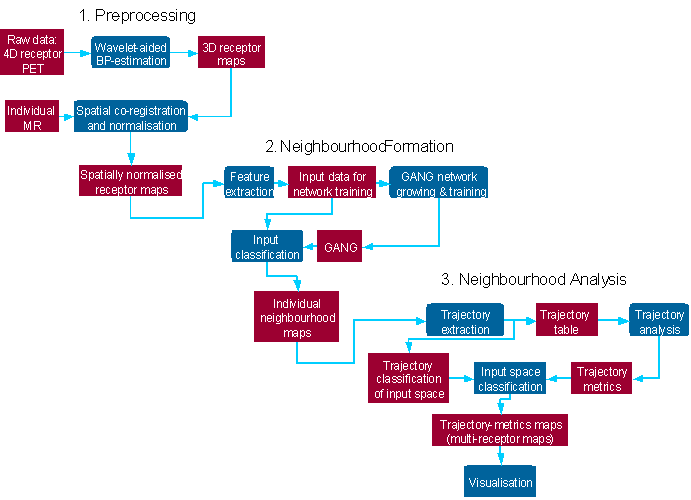 |
Data-mining tools for the analysis of multireceptor data Zsolt Cselényi Department of Clinical Neuroscience, Psychiatry Section, Karolinska Institute, Stockholm |
 |
Data-mining tools for the analysis of multireceptor data Zsolt Cselényi Department of Clinical Neuroscience, Psychiatry Section, Karolinska Institute, Stockholm |
Positron emission tomography (PET) has proved to be a highly successful technique in the qualitative and quantitative exploration of the human brain’s neuroreceptor / neurotransmitter systems. In recent years the number of PET radioligands, targeted to different neuroreceptor systems of the human brain, has increased considerably. This development paves the way for a simultaneous analysis of different receptor systems and sub-systems in the same individual. The detailed exploration of the versatility of neuroreceptor systems requires novel technical approaches, capable of operating on huge parametric image datasets. An initial step of such explorative data processing and analysis should be the development of novel exploratory data-mining tools to gain insight into the “structure” of complex multi-individual, multi-receptor data sets.
We propose an unsupervised, unbiased data-mining tool for this task and demonstrate its usefulness by analysing quantitative receptor maps of different neuroreceptor systems, obtained with positron emission tomography from several healthy subjects. Major components of the proposed technique include the projection of the input receptor maps to a feature space, the quasi-clustering and classification of projected data (neighbourhood formation), trans-individual analysis of neighbourhood properties (trajectory analysis), and the back-projection of the results of trajectory analysis to normal space (creation of multi-receptor maps). The resulting multi-receptor maps suggest that complex relationships and tendencies in the relationship between pre- and post-synaptic transporter-receptor systems can be revealed and classified by using this method. These parameter-specific multireceptor maps can usefully guide the researchers in their endeavour to formulate models of multi-receptor interactions and changes in the human brain.
Flowchart of Multi-receptor Analysis
